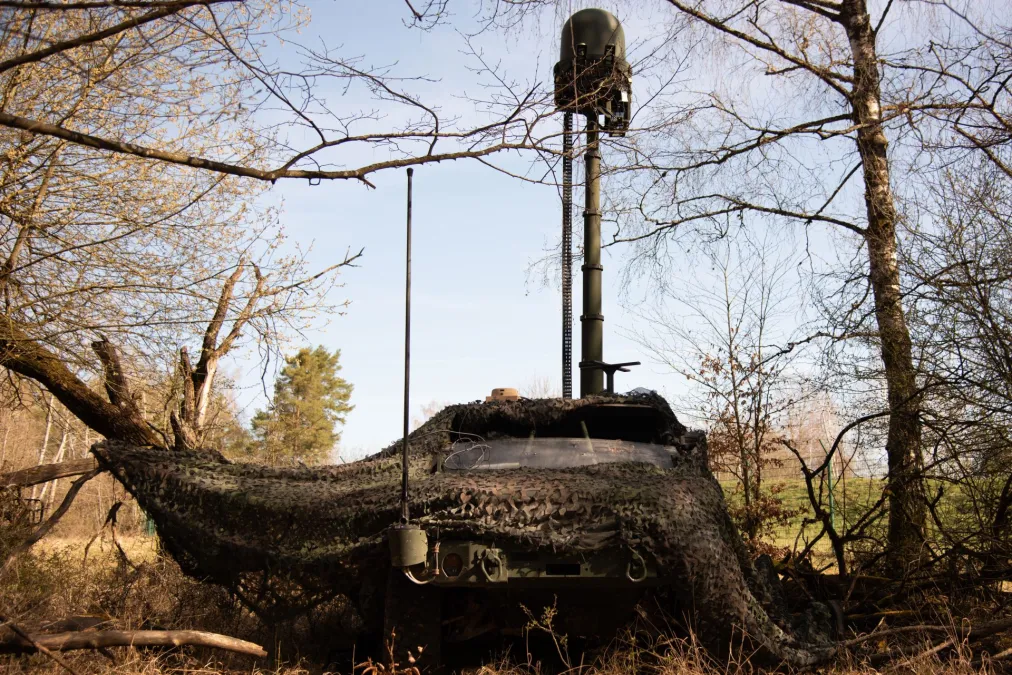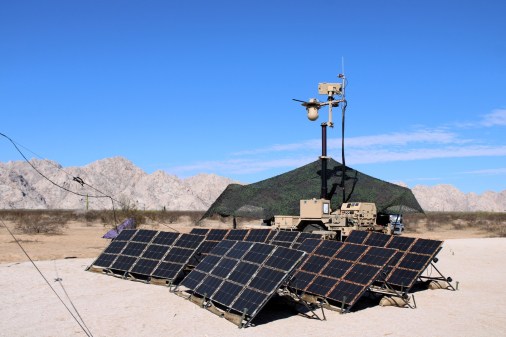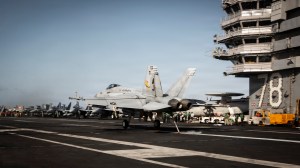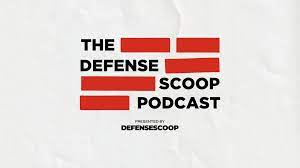Electronic warfare receiving more senior level attention within the Army

AUGUSTA, Ga. — Electronic warfare is now getting more senior level recognition within the Army.
“The [chief of staff of the Army] in one of his recent briefs actually touched on the fact that electromagnetic warfare is a core competency,” Col. Leslie Gorman, Army capability manager for electromagnetic warfare, said during a presentation Tuesday at the TechNet Augusta conference. “The bottom line is EW is a cross-cutting function that we are observing actively every day, across every warfighting function.”
Other officials across the service have noted that the Army is placing more emphasis on the significance of electromagnetic warfare in modern conflict.
“I think it’s been pretty well known that the Army has, after facing 20 years of GWOT, or global war on terror, that we needed to retool our focus, as the chief has been doing with several of his initiatives, most recently, the Army Transformation Initiative,” Maj. Gen. Jake Kwon, director of the Department of the Army’s Management Office for Strategic Operations, said in an interview Aug. 14. “The direction that we were headed where we had these long lead-time programs of record, we had an electronic warfare enterprise that had been shaped by the global war on terror and the counterinsurgency, and that was incompatible for what we’re going to face in the future with large-scale combat operations.”
The service has been on a years-long journey to reinvigorate and reinvest in advanced EW capabilities, after having divested much of its arsenal after the Cold War. Adversaries, in that time, have recognized the importance of the spectrum and developed new capabilities, techniques and doctrine.
Russia’s incursion into Ukraine in 2014 served as a bit of a wakeup call for the Army as it observed the Russian military’s tactics. Since then, it has sought to invest in capabilities and elevate the discipline — to include jamming techniques and signature management of friendly forces — to the highest levels of the service given if units are discovered in the spectrum based on their emissions, they can be fired upon in minutes.
As part of that investment, the Army published a classified electronic warfare strategy in March, developed by Kwon’s office.
That strategy was spurred on, in part, by Chief of Staff Gen. Randy George’s recognition of the spectrum’s importance, Kwon said.
“We did release that new strategy back in March of this year, to provide direction to the force. It’s got five major lines of effort in there, predominantly looking at establishing, formalizing the EW enterprise, looking at multi-domain operations, and ensuring that we’re set for that continuing modernization and transformation efforts — and then also putting attention toward readiness in government, but also establishing partnerships,” he said.
The Army is working on a forthcoming implementation plan.
The strategy is nested with the secretary of defense’s directive for 2025 as well as the Army Transformation Initiative, Dave May, senior advisor at the Cyber Center of Excellence, said at the TechNet conference Wednesday.
Parallel to the strategy, the Army also established what it calls the electronic warfare board of directors, a forum led by the three-star general that heads the Army’s deputy chief of staff for operations, plans, and training, or G-3/5/7. That board aids in overseeing the execution of the strategy and can provide direction at a senior level within the Pentagon when issues come up from the force.
That board of directors fills a gap to ensure there is sufficient Army senior leader attention on these issues and, whether it’s lessons from the battlefield or the direction the Army wants to go, make sure those are nested within the chief and secretary’s guidance to get that out to the field for common direction, Kwon said.
It provides steering direction to solve EW-related issues that can come up from the field or help drive investment and capability priorities.
Other significant investments the Army has been making include new force structure. While the service had been building toward new electronic warfare companies and platoons, it recently approved a significant increase in the size of those forces.
“Just recently, we’ve made a decision to double the size of our EW platoon at the mobile BCT, recognizing that we need more capability at the tactical edge,” May told conference attendees, using an acronym to refer to brigade combat teams.
May told DefenseScoop on the sidelines of the event that part of the increase is due to changes the Army is making overall with its structure. The service recently decided to create mobile brigade combat teams, making formations lighter and more agile on the battlefield.
“The recognition as we move from the Strykers, the armored and the infantry to this mobile concept is that we need more EW horsepower. They are essentially doubling the size of the mobile BCT EW platoons over the next several years,” May said. “That has, of course, some implications to how we’re going to field the kit to make sure that we get everything aligned, because we’re basically doubling the amount of materiel that’s going to be necessary.”






